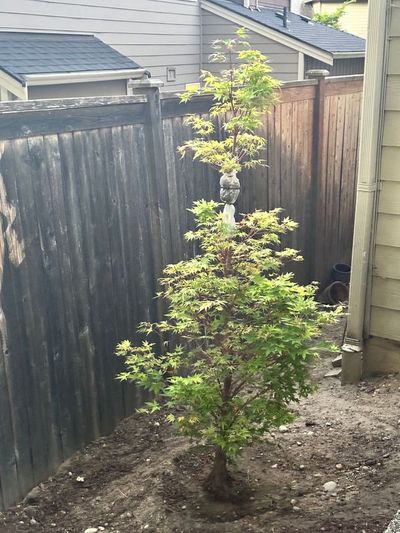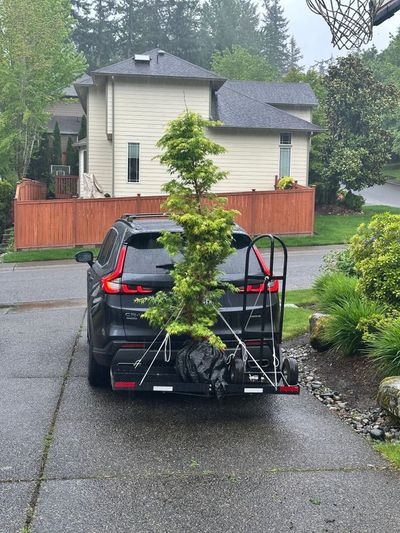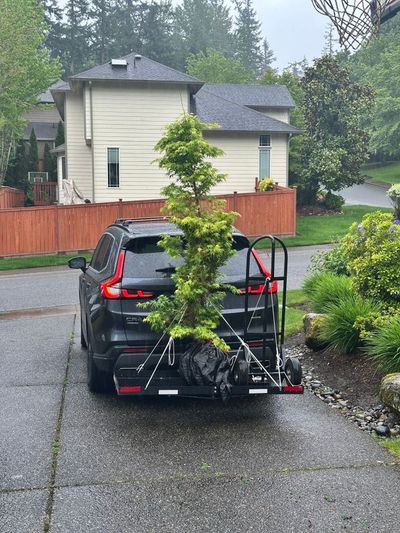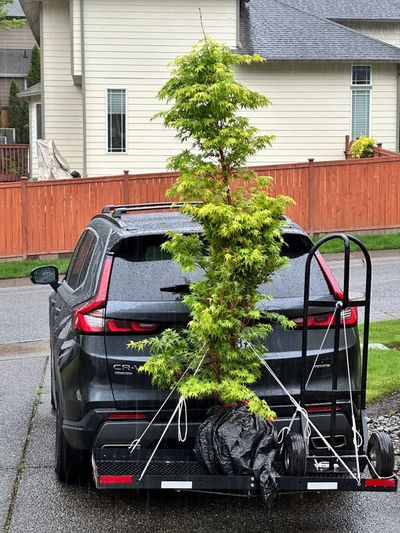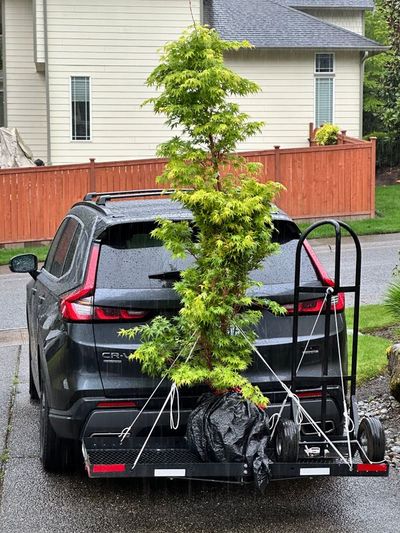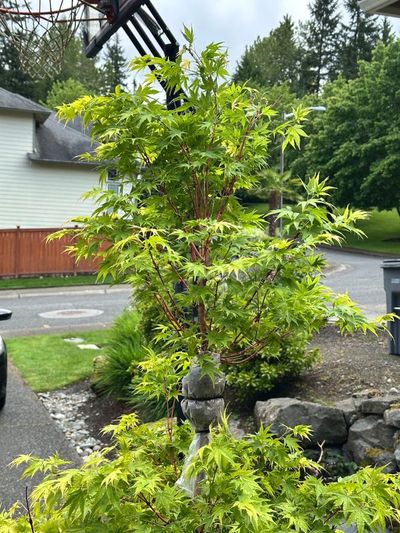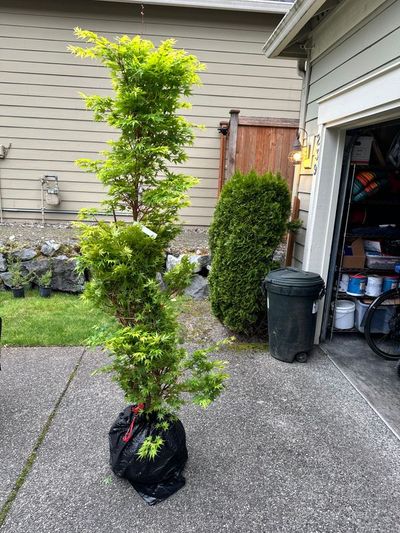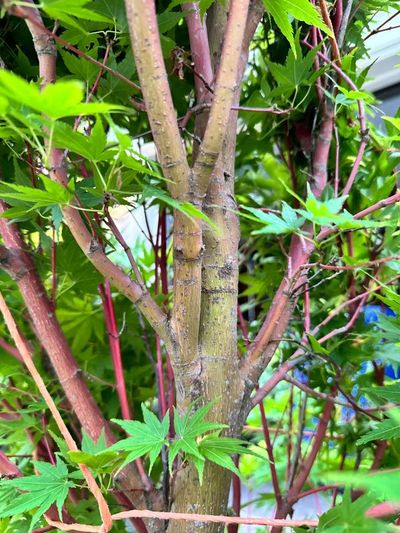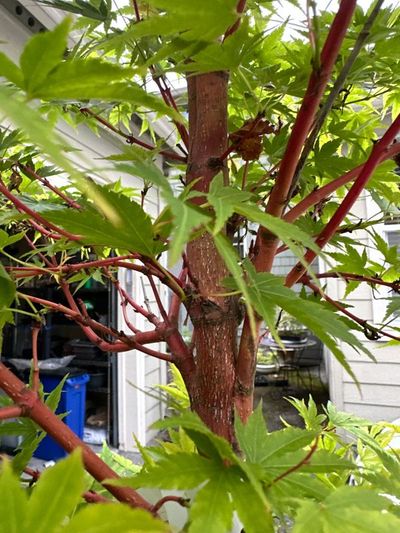My Trees > Japanese Maple 6
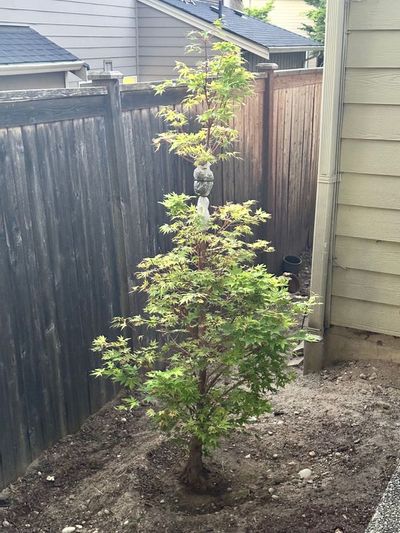
Coral bark japanese maple tree (air layer donor)
Provenance
Purchased at Squak Mountain NurseryBackground
- Estimated Origin: April 2005
- Training Since: May 2025
- Acquired: May 16, 2025
- Progression: Pre-Bonsai
Tree Details
- Exhibition Ready: No
About Japanese Maple 6
There are trees you grow, and there are trees that give. This is a giver, plain and profound. Her time in the spotlight will come, but not before she’s offered herself to the future. You can already count one air layer placed, with more to come, and in each of them is a promise: of form, of flame-colored bark, of grace yet to be shaped.
She isn’t rushing toward refinement or display. She stands, rooted in her quiet strength, allowing others to grow from her. This is a tree in service. Her trunk already hints at power, and with patience, she will bear taper earned honestly, through restraint, through generosity, through time.
In this garden, she will mother many. And someday, when her final layer is taken, when her trunk is cut back to begin again, she will have not only the makings of a fine bonsai, but the dignity of a tree who gave rise to a forest.
This is her story, not of what she is, but what she makes possible.
Care Plan
Here's my season-by-season care plan that is mindful of her generosity, my intentions, and the patience this all deserves. It’s broken down by year and season, with attention to timing, health, and purpose.
This timeline ensures I'm never overloading her, I'm always acting with intention, and every cut, root, and layer serves a purpose. It's a generational story—five trees born from one, each with time to establish itself.
2025 – First Offering, First Roots
-
Spring (done): Plant in ground for strength and initiate the air layer on the top section.
-
Summer: Monitor for callus and root development. Keep moist, shaded in afternoon sun, and don’t stress the tree further.
-
Autumn: If roots are visible and strong (unlikely but possible), you may separate. Otherwise, leave until spring 2026.
- Concern around possible freezing temps in winter on the new roots. Needs more research.
-
Winter: Dormant rest. No pruning. No fertilizing. Let her consolidate energy.
2026 – Recovery & Round Two
-
Early Spring:
- Separate first air layer if not already done. Pot gently and begin its own care track as a new pre-bonsai.
- Apply balanced fertilizer once buds begin to swell on the parent tree.
-
Late Spring:
- Initiate second air layer (mid-upper section with good branch structure).
-
Summer:
- Shade, monitor for rooting. Continue balanced fertilization through midsummer, then switch to low nitrogen.
-
Autumn:
- Same rhythm: separate if ready, or wait for spring 2027.
-
Winter:
- Plan structural pruning only if energy is strong. I'll try to be minimal while keeping future options viable. Focus still on stability and vigor.
2027 – Double Gifts and Transition Begins
-
Early Spring:
-
Separate second layer, if not already.
-
Initiate two new air layers:
- One on the main trunk lower down.
- One on a low branch.
-
-
Spring/Summer:
- Fertilize consistently. Maintain airflow. Light defoliation only if density is causing inner dieback.
-
Autumn:
- Monitor roots. May separate one or both by fall, or delay until 2028 spring.
-
Winter:
- Begin observation of future leader selection for the mother tree. Allow sacrifice branches to continue developing taper. No major cuts yet.
2028 – Last Layer & Future Emerges
-
Early Spring:
-
Separate third and fourth air layers (if not already).
-
Initiate final air layer, the last possible upper trunk section.
-
Begin true training of the mother tree:
- Reduce competing apexes.
- Begin gentle clip-and-grow to guide taper and structure in new leader.
-
-
Summer:
- Light pruning to balance vigor between leader and sacrifice branches.
- Manage water and feeding precisely—favor slow, steady growth.
-
Autumn:
- Evaluate readiness to separate final layer.
-
Winter (2028–29):
- This is the pivot point. The mother becomes the focus. She has given what she could.
2029 and Beyond – Becoming Herself
- Begin building branch structure slowly.
- Focus on trunk taper and silhouette refinement.
- Root work as needed in digging and repotting (likely 2030).
- All former air layers now in development will have their progress tracked as individual trees with their own care logs.
Care Log
-
July 14, 2025
Observation
Photos taken of where it is planted now. Looking well. Initially there was quite a bit of dieback, but that is likely because of being dug up for the nursery. It also got a couple hot days before I got it planted.
-
May 31, 2025
Ground Plant
Planted near back patio.
-
May 17, 2025
Other, Air layer added
Added air layer for top of tree, Ben B instructor at Eastside PSBA study group
-
May 16, 2025
Other, Acquired
Bought from Squak Mtn Nursery for air layer bonsai study group next day ($175)
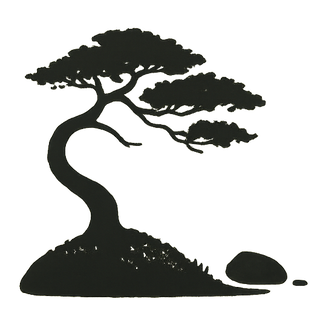 Mossy Spot
Mossy Spot
